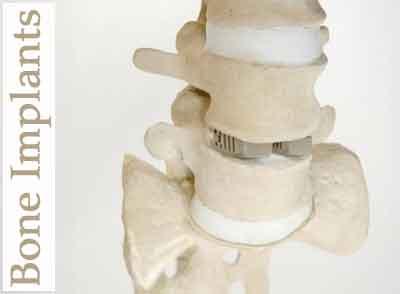- Home
- Editorial
- News
- Practice Guidelines
- Anesthesiology Guidelines
- Cancer Guidelines
- Cardiac Sciences Guidelines
- Critical Care Guidelines
- Dentistry Guidelines
- Dermatology Guidelines
- Diabetes and Endo Guidelines
- Diagnostics Guidelines
- ENT Guidelines
- Featured Practice Guidelines
- Gastroenterology Guidelines
- Geriatrics Guidelines
- Medicine Guidelines
- Nephrology Guidelines
- Neurosciences Guidelines
- Obs and Gynae Guidelines
- Ophthalmology Guidelines
- Orthopaedics Guidelines
- Paediatrics Guidelines
- Psychiatry Guidelines
- Pulmonology Guidelines
- Radiology Guidelines
- Surgery Guidelines
- Urology Guidelines
3-D printed bone implant dissolves in the body

Moscow : In a major step towards improving surgeries after head or face injuries, Russian scientists have developed a new type of 3-D-printed polymeric bone implants that can get absorbed and subsequently replaced with natural bone tissue in the body.
The prototype can be printed on 3D-printers according to specific parameters, contracted to half its size, then heated in the course of the surgery so the implant can obtain its original shape and size and is securely fixed in the section of the bone being restored.
The implant is installed with a minimum number of metal fixators that are traditionally used in transplantation.
"We have successfully employed the shape memory effect of the lactic acid polymer a composite based on polylactide. The porous composite structure is capable of shrinking to half its original size and then returning to its original shape," Project Manager Fyodor Senatov National University of Science and Technology MISIS in Moscow, said in a statement.
"This material is bio resorbable: it decomposes in the body without causing any harm," Senatov noted.
The researchers noted in traditional implant insertion after head injury, additional surgery is often required required due to the low rate of integration with the surrounding tissues or wrong implant position.
The newly invented polymeric implant has a specified geometry and high porosity, and does not require any additional treatment, the researchers said.
Due to the properties of the material and the use of the patient's own cells, it rapidly adapts and gets replaced with natural bone tissue.
"Together with specialists at the N.N. Blokhin Russian Cancer Research Center, we have developed the technique of colonising the bio engineered structure with cells isolated from the patient's bone marrow," Senatov said,
"The preliminary colonization stimulates budding of blood vessels and tissues inside the implant, which optimises the process and increases the rate of integration with the surrounding tissues, making for more effective transplantation," Senatov said.
The developers plan to use the new implants in oral and maxillofacial surgery to replace small parts of skull bones, up to five cubic centimeters in size.
The estimated cost of a bio engineered structure colonised with cells isolated from the patient's bone marrow is about $400, the researchers said.

Disclaimer: This site is primarily intended for healthcare professionals. Any content/information on this website does not replace the advice of medical and/or health professionals and should not be construed as medical/diagnostic advice/endorsement or prescription. Use of this site is subject to our terms of use, privacy policy, advertisement policy. © 2020 Minerva Medical Treatment Pvt Ltd